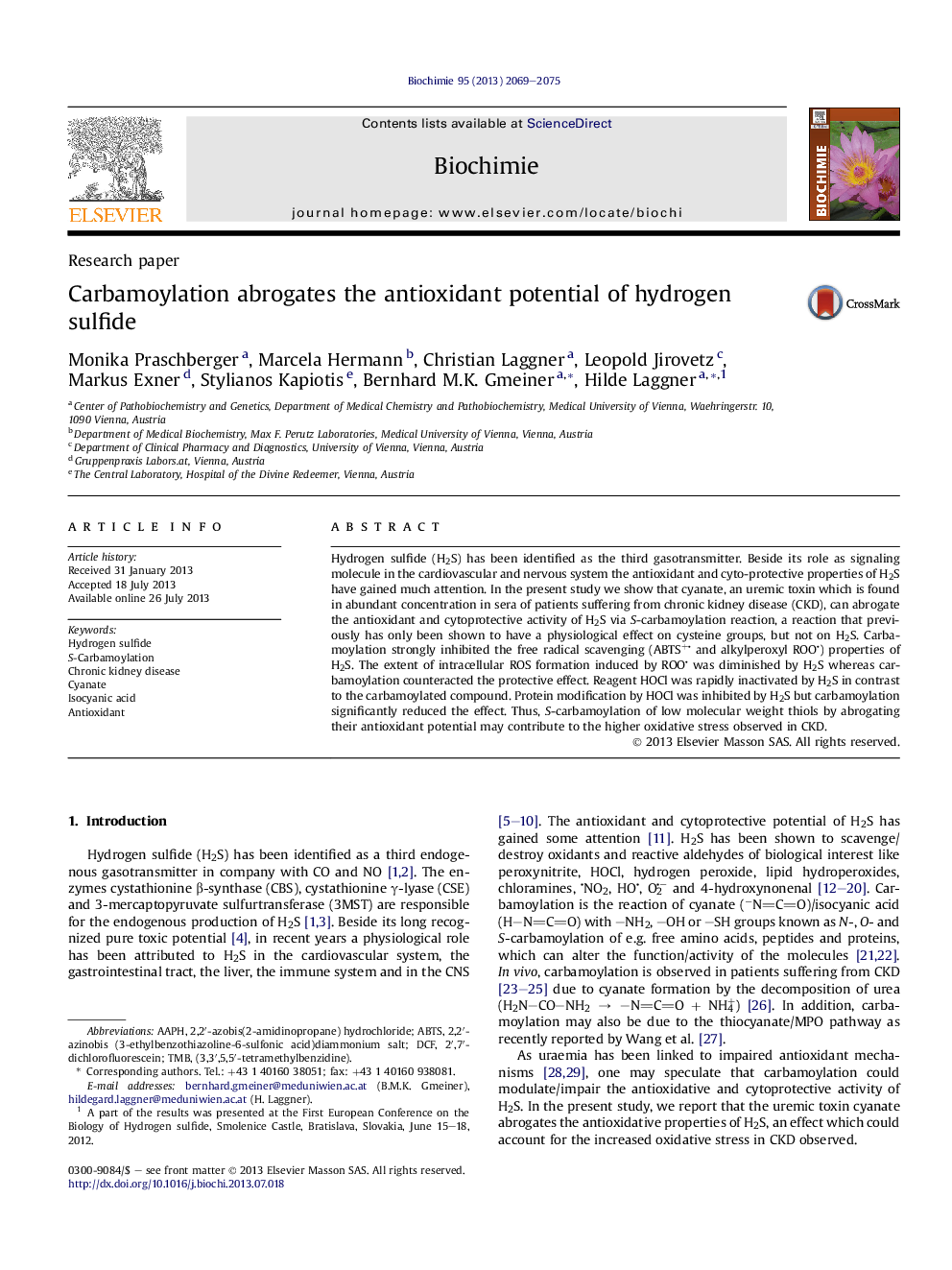| Article ID | Journal | Published Year | Pages | File Type |
|---|---|---|---|---|
| 1952160 | Biochimie | 2013 | 7 Pages |
•H2S undergoes carbamoylation reaction in the presence of cyanate.•The second order rate constant was determined to be 3.9 ± 0.12 M−1 min−1.•We found that cyanate abrogates the antioxidant and cytoprotective activity of H2S.•This may contribute to higher oxidative stress found in uraemia.
Hydrogen sulfide (H2S) has been identified as the third gasotransmitter. Beside its role as signaling molecule in the cardiovascular and nervous system the antioxidant and cyto-protective properties of H2S have gained much attention. In the present study we show that cyanate, an uremic toxin which is found in abundant concentration in sera of patients suffering from chronic kidney disease (CKD), can abrogate the antioxidant and cytoprotective activity of H2S via S-carbamoylation reaction, a reaction that previously has only been shown to have a physiological effect on cysteine groups, but not on H2S. Carbamoylation strongly inhibited the free radical scavenging (ABTS+ and alkylperoxyl ROO) properties of H2S. The extent of intracellular ROS formation induced by ROO was diminished by H2S whereas carbamoylation counteracted the protective effect. Reagent HOCl was rapidly inactivated by H2S in contrast to the carbamoylated compound. Protein modification by HOCl was inhibited by H2S but carbamoylation significantly reduced the effect. Thus, S-carbamoylation of low molecular weight thiols by abrogating their antioxidant potential may contribute to the higher oxidative stress observed in CKD.
